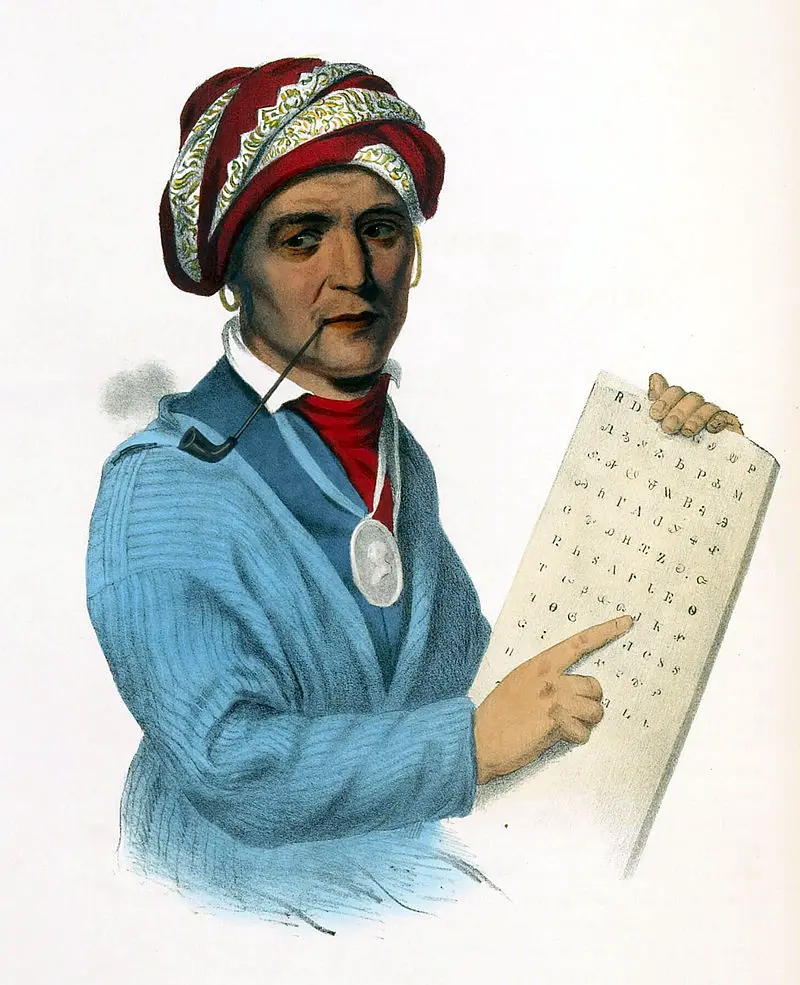Native American Depictions
The extensive history of the Native Americans is set in stone — but the way people interpret them changes. The depiction of Native Americans in history and literature has shifted through the years. One of the primary criticisms is that it wasn’t written in the perspective of the Native Americans but the White Americans that invaded their homeland.
This is an important aspect of historiography or the study of the way history is written. There is an understanding that history is written by the victorious side of a conflict. The way elements of history are given emphasis or downplayed in the background reflects the values of its historians.
Native Americans Depictions Facts for Kids
- Native Americans account for 1.5% of the American population, according to the U.S. Census Bureau. There are about 4.5 million Native Americans in the country.
- November is National American Indian Heritage Month as established in 1990 by President George H. W. Bush.

- The Sequoia tree is in honor of the Cherokee leader Sequoyah, a pioneer in developing an alphabet for his people.

- Barbecue is a term that developed from the Arawakan Indian language that means “framework of sticks.”
- It is estimated that Native Americans have been on the continent as early as 12,000 B.C.
For example, in the depiction of Native Americans, the early perception was that it was a positive development that White Americans supplanted the “savages” that were native inhabitants.
This changed in the 1960s when there was a shift in the historiography of America. Civil rights became an important discussion, and it emphasized the difficulties and struggles that the ethnic minorities of America have endured.
With this recent awareness of the historiography of Native Americans, it is important to focus on respected and established references about Native American history. One of the most important is the Handbook of North American Indians, published by the Smithsonian Institution under the editorship of William C. Sturtevant.
This is a 22-volume series that documents the history, language, and culture of the various Indian tribes of North America. One tribe is featured in each volume. There is also a separate volume on Indian languages and the relations of Native Americans and Whites.
Another reputable source of information on Native Americans is The Indians of North America, edited by Frank W. Porter III. It is a 53-volume series from Chelsea House Publishers. Each book has a respected scholar as its author and is complete with illustrations, maps, and images.
Bury my Heart at Wounded Knee: An Indian History of the American West is a popular survey of Indian history by Dee Brown. This is a book that reflects the fresh perspectives about the Native Americans during the 1960s. They were more than savages. They were proud and complex people that suffered broken treaties, bloody defeats, and loss of sacred lands. Its highlight is the 1890 Wounded Knee massacre. A similar reference for Native Americans is The Patriot Chiefs: A Chronicle of American Indian Resistance by Alvin M Josephy.
Who edited the reference book Handbook of North American Indians?
It was William C. Sturtevant who did editorial work for the Smithsonian Institution
How many volumes are The Indians of North America?
It is comprised of 53 volumes series
When did the Wounded Knee massacre occur?
It happened in 1890.
Who wrote The Patriot Chiefs: A Chronicle of American Indian Resistance?
The author is Alvin M Josephy.



